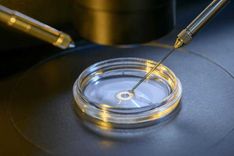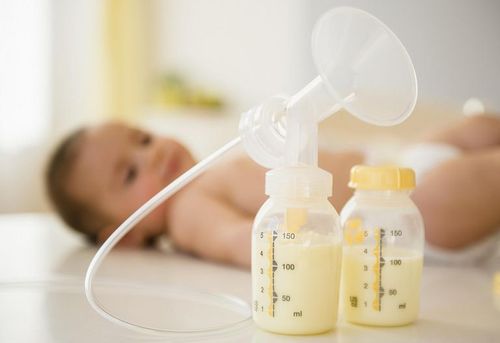This is an automatically translated article.
For infants and young children, breast milk is always the best source of food, ensuring the full development of the child, the components of breast milk not only help children stay healthy and increase their resistance, but also mothers, breastfeeding will bring many benefits.
In fact, many mothers wonder what color breast milk is? However, depending on the location of each mother and the nutritional regimes that the mother uses, the answer will be different, usually, breast milk is yellow.
Breast milk and especially colostrum contain essential nutrients for the development of the baby. According to research, the amount of protein in colostrum is 10 times higher than in normal breast milk. In addition, colostrum contains other important components such as vitamins, minerals, enzymes, amino acids... The antibodies in colostrum have the ability to kill harmful bacteria and viruses and regulate the immune system to help the body. Newborn body resists disease, grows and stays healthy.
The composition of breast milk has substances such as protein, carbohydrates, vitamins and minerals, and trace elements that your baby needs for healthy growth, in the amounts necessary for the needs of each baby's age. The content of breast milk adapts precisely to the needs of the baby throughout development.
According to research, every 100ml of breast milk is about: 65 calories; 6.7g carbohydrates (mainly lactose); 3.8g fat; 1.3g protein. The milk fat content can range from 2g/100mL to 5g/100mL. Each liter of mature breast milk also contains:
Cholesterol at concentrations between 100 and 150 mg/L Calcium at concentrations ranging from 254 to 306 mg/L Sodium at concentrations between 140 and 220 mg / Phosphorus in concentrations ranging from 188 to 262 mg/L Vitamin C at a concentration of 50 to 60 mg/L (assuming the mother consumes more than 100mg of vitamin C per day) Magnesium at a concentration of about 35 mg/L and a much smaller amount of zinc, pantothenic acid, nicotinic acid, iodine, vitamin A and copper. Breast milk contains trace amounts of other vitamins and minerals (including vitamins E, K, D, and B vitamins) and a range of hormones, growth factors, and infection-fighting substances Iron levels can range from 0.2 up to 0.9 mg/L. When a child is exclusively breastfed for the first 6 months, the child will have enhanced antibodies, improve resistance, reduce the risk of skin diseases, asthma, obesity.. The composition of breast milk also plays a role in helping children develop a natural immune system by creating favorable conditions for beneficial bacteria in the intestinal tract to develop, helping to destroy harmful bacteria thereby reversing the risk of infection. infections and diseases... Breastfed babies have higher IQs.
The benefits of breastfeeding extend beyond weaning. Breast milk also has the effect of preventing cardiovascular metabolic diseases such as obesity, high blood pressure, high blood lipids and type 2 diabetes. Breast milk is full of nutrients, especially from 10 to 15 days after birth. Therefore, doctors advise mothers to breastfeed from birth.
Please dial HOTLINE for more information or register for an appointment HERE. Download MyVinmec app to make appointments faster and to manage your bookings easily.













